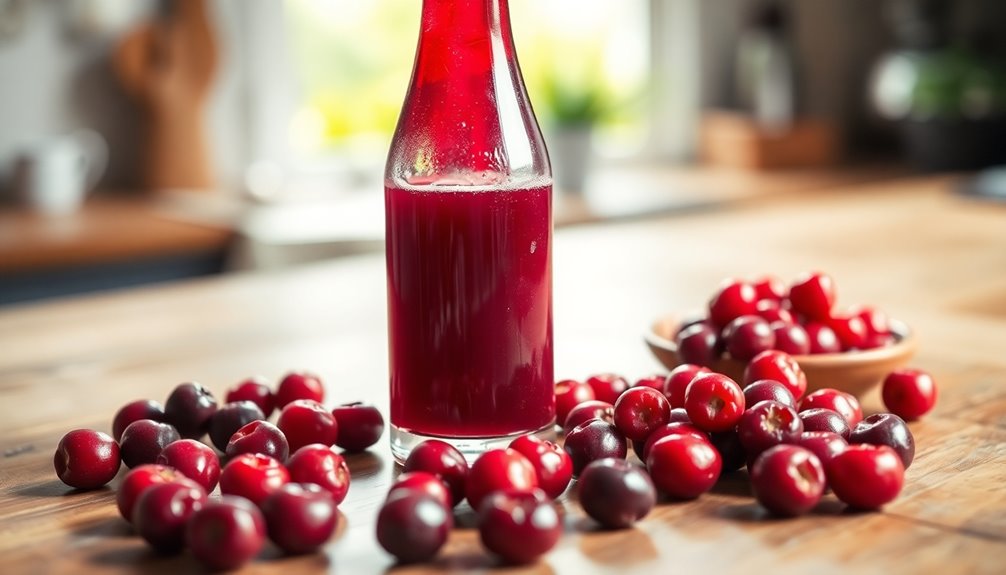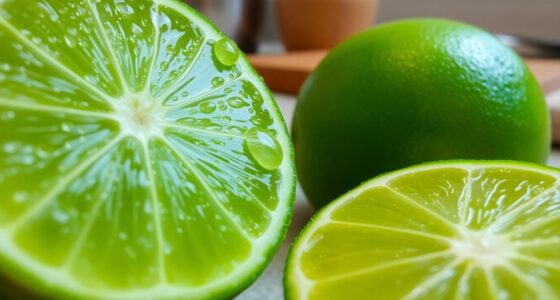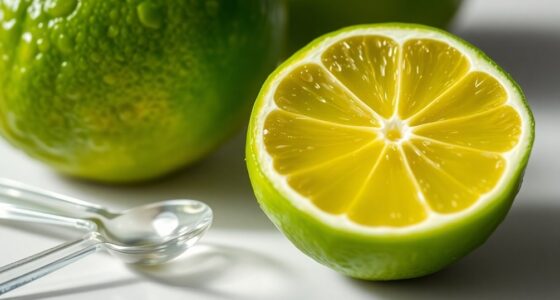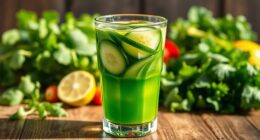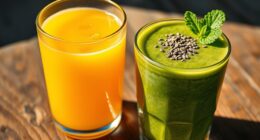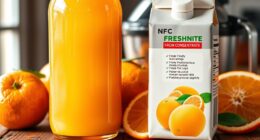Cranberry juice lasts about 18 to 24 months when it's unopened and stored properly in a cool, dark place. Once you open it, you should drink it within 8 to 12 days for the best taste. Make sure to refrigerate the juice and keep it in an airtight container to minimize spoilage. Always check for signs of spoilage before you drink. There's more to know about storage and freezing options if you want to extend its shelf life.
Key Takeaways
- Unopened cranberry juice lasts approximately 18 to 24 months at room temperature; check the expiration date for best quality.
- Once opened, cranberry juice lasts about 8 to 12 days when refrigerated and should be consumed within 2 to 3 weeks.
- Cranberry juice can be frozen for up to 12 months, although texture and flavor may change upon thawing.
- Signs of spoilage include a color change to brown, off odors, or mold presence; discard if these are detected.
- For optimal freshness and flavor, consume opened cranberry juice within the recommended timeframe and regularly check for spoilage signs.
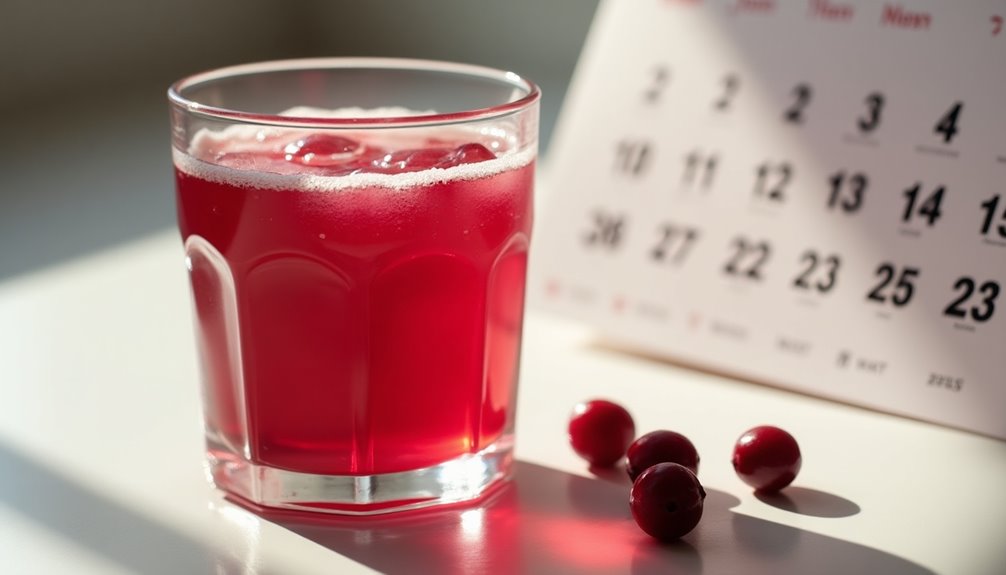
When you pick up a bottle of cranberry juice, you might wonder how long it'll stay fresh. It's essential to know how to store it properly, whether you have an unopened or opened bottle. Unopened cranberry juice can last approximately 18 to 24 months at room temperature. That's a pretty good shelf life!
But once you crack that seal, things change a bit. Opened cranberry juice typically lasts around 8 to 12 days when refrigerated. To get the most out of your juice after opening, it's best to store it in an airtight container. This helps to minimize exposure to air, which can lead to spoilage.
If you want to extend the shelf life of your cranberry juice even further, consider freezing it. You can freeze cranberry juice in a freezer-safe container, and it can last up to 12 months in the freezer. Just remember that once it's frozen, it's a good idea to consume it within that timeframe for the best quality.
While it might still be safe to drink beyond the recommended period, you may notice a decline in flavor and freshness.
Keep an eye out for signs of spoilage. If you notice a change in color—from that vibrant, bright red to a brownish hue—that's a clear indication that your juice has gone bad. Additionally, if you detect any off odors or see mold, it's best to discard the juice.
These signs that the juice has spoiled mean it's no longer safe to consume, even if it's within the timeframe you expected.
For optimal quality, you should consume your opened cranberry juice within 2 to 3 weeks. This timeframe ensures that you enjoy the flavor and nutritional benefits that fresh juice offers. To further enhance your beverage experience, you might want to consider checking the label for information on ingredients and nutritional content. Many people are curious about how many carbs in cranberry juice, as it can vary between brands and formulations. Staying informed about the nutritional profile of your juice can help you make better choices for your health.
Even though cranberry juice may remain safe to drink beyond its best quality period, adhering to these recommended timeframes will guarantee the best experience.
Frequently Asked Questions
How Do You Know if Cranberry Juice Has Gone Bad?
You can tell if cranberry juice has gone bad by checking its appearance and smell.
Look for any darkening or cloudiness in the juice, which indicates spoilage. If it smells sour or rancid, it's definitely time to toss it.
Floating particles or films are also signs of fermentation. Always trust your senses—if it doesn't smell sweet and inviting, it's best to discard the juice to avoid potential illness.
How Long Does Cranberry Juice Last in the Refrigerator?
Storing opened cranberry juice is like keeping a delicate flower alive; it needs care and the right conditions.
In the refrigerator, your opened cranberry juice lasts about 8 to 12 days if you keep it in an airtight container.
Make sure you're continuously refrigerating it, as warmth can spoil it quickly.
To enjoy the best flavor, aim to drink it within 2-3 weeks after opening, watching for any signs of spoilage.
How Long Is Ocean Spray Cranberry Juice Good For?
Ocean Spray cranberry juice is good for quite a while if you store it properly.
Unopened, it lasts 18 to 24 months at room temperature.
Once you open it, you should drink it within 8 to 12 days when kept in the fridge.
If you decide to freeze it, it can last up to 12 months, but keep in mind that the flavor and texture might change after thawing.
Always check for spoilage signs.
How Long Does Juice Last After Opening?
Once you open juice, it typically lasts about 7 to 10 days if you store it in the fridge.
To keep it fresh, make sure you seal it tightly in an airtight container. Avoid leaving it out at room temperature for too long, as that can speed up spoilage.
Always check for signs like off odors or changes in color before drinking. If it looks or smells bad, don't hesitate to toss it out.
Conclusion
In conclusion, cranberry juice can last quite a while if stored properly—about 1-3 weeks in the fridge after opening and up to a year when sealed. Keeping an eye on the expiration date and any changes in color or smell can help you avoid any unpleasant surprises. So, why not enjoy that refreshing glass of cranberry juice while it's still at its best? After all, nothing beats the vibrant flavor and health benefits it brings!
Cindy thoroughly researches juicing trends, techniques, and recipes to provide readers with practical advice and inspiration. Her writing style is accessible, engaging, and designed to make complex concepts easy to understand. Cindy’s dedication to promoting the advantages of juicing shines through her work, empowering readers to make positive changes in their lives through the simple act of juicing.

